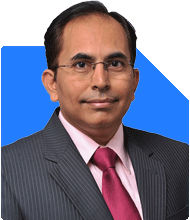27-Year-Old Looking to Diversify Portfolio with Increased Investment - Need Help!
Ramalingam Kalirajan |10870 Answers |Ask -Follow
Mutual Funds, Financial Planning Expert - Answered on Jul 26, 2024
He has an MBA in finance from the University of Madras and is a certified financial planner.
He is the director and chief financial planner at Holistic Investment, a Chennai-based firm that offers financial planning and wealth management advice.... more

Hi, I am 27 years old. I am currently investing total 10k/month in SIP Mutual fund Quant Small Cap --> 5k , HDFC Flexi Cap --> 3k , ICICI Technology Fund --> 2k. I want to increase the investment to 30k/month. Can you help me to decide on the categories for diversifying the portfolio? Other means of saving I am doing is EPF,PPF for retirement, Stocks (current value 2L), FD
Mutual Fund Investments
Rs. 5,000 in Small Cap Fund
Rs. 3,000 in Flexi Cap Fund
Rs. 2,000 in Technology Fund
Other Investments
EPF and PPF for retirement
Rs. 2 lakh in stocks
Fixed Deposit
Diversifying Your Portfolio
Large Cap Funds
Large Cap Funds are a safe option. They invest in top companies with stable performance. Allocating Rs. 8,000/month here can provide stability.
Mid Cap Funds
Mid Cap Funds invest in medium-sized companies with growth potential. They balance risk and reward well. Investing Rs. 6,000/month is advisable.
Debt Funds
Debt Funds are less risky. They provide regular income and capital preservation. You can invest Rs. 5,000/month here.
Balanced or Hybrid Funds
Balanced Funds mix equity and debt. They offer moderate risk with balanced returns. A Rs. 4,000/month investment is suitable.
International Funds
International Funds invest in global markets. They offer diversification beyond domestic markets. Consider Rs. 3,000/month here.
Sectoral or Thematic Funds
Sectoral Funds focus on specific industries. They can be rewarding but risky. A small allocation of Rs. 2,000/month can be beneficial.
Advantages of Actively Managed Funds
Professional Management
Actively Managed Funds are handled by experts. They aim to outperform the market.
Flexibility
These funds adjust based on market conditions. This flexibility can help in uncertain times.
Potential for Higher Returns
They have the potential to deliver better returns than index funds.
Final Insights
Diversifying your investments is key. Spread your money across various categories for balance. Avoid heavy reliance on one type of fund. Review and adjust your portfolio periodically.
Best Regards,
K. Ramalingam, MBA, CFP,
Chief Financial Planner,
www.holisticinvestment.in
If you prefer simplicity and professional management, continue with Flexi cap.
For more control and potential to optimize returns based on market cycles, divide into large cap and mid cap separately.
Best Regards,
K. Ramalingam, MBA, CFP
Chief Financial Planner,
www.holisticinvestment.in
You may like to see similar questions and answers below
Janak Patel |71 Answers |Ask -Follow
MF, PF Expert - Answered on Jul 15, 2025
Naveenn Kummar |233 Answers |Ask -Follow
Financial Planner, MF, Insurance Expert - Answered on Sep 24, 2025
Dr Dipankar Dutta |1837 Answers |Ask -Follow
Tech Careers and Skill Development Expert - Answered on Dec 05, 2025
Dr Shyam Jamalabad |108 Answers |Ask -Follow
Dentist - Answered on Dec 05, 2025
Dr Shyam Jamalabad |108 Answers |Ask -Follow
Dentist - Answered on Dec 05, 2025
Dr Shyam Jamalabad |108 Answers |Ask -Follow
Dentist - Answered on Dec 05, 2025
Dr Dipankar Dutta |1837 Answers |Ask -Follow
Tech Careers and Skill Development Expert - Answered on Dec 05, 2025
Ulhas Joshi |280 Answers |Ask -Follow
Mutual Fund Expert - Answered on Dec 05, 2025
Dr Dipankar Dutta |1837 Answers |Ask -Follow
Tech Careers and Skill Development Expert - Answered on Dec 04, 2025
Ravi Mittal |676 Answers |Ask -Follow
Dating, Relationships Expert - Answered on Dec 04, 2025
Anu Krishna |1745 Answers |Ask -Follow
Relationships Expert, Mind Coach - Answered on Dec 04, 2025
Anu Krishna |1745 Answers |Ask -Follow
Relationships Expert, Mind Coach - Answered on Dec 04, 2025


























